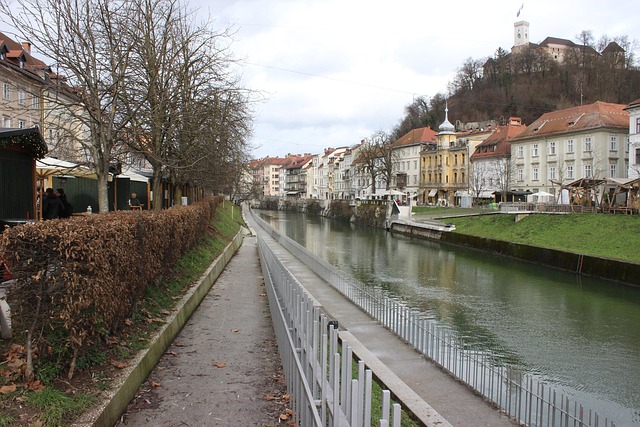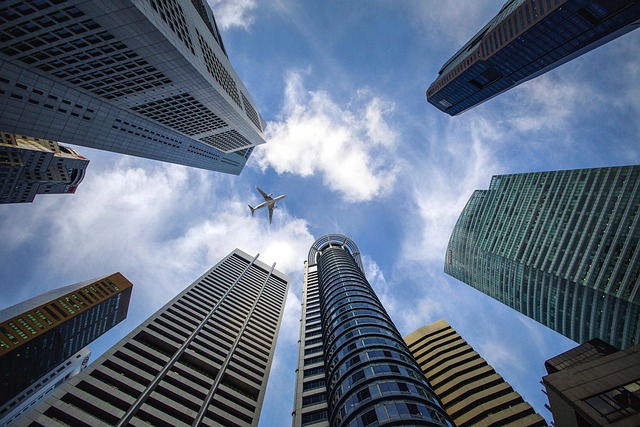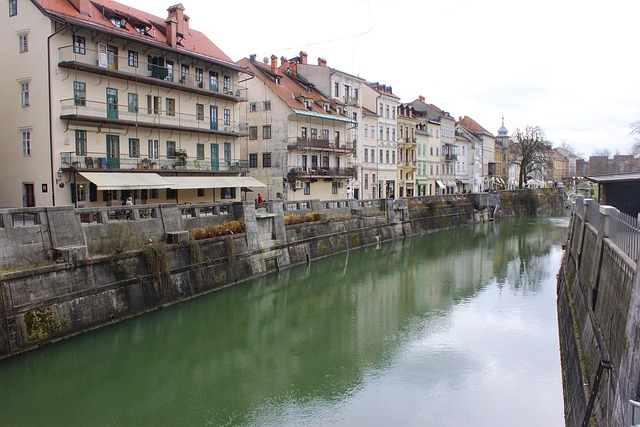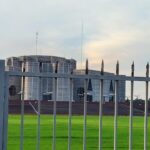Karachi, as a dynamic metropolis, relies on structured construction bylaws for balanced development. These laws regulate zoning, permits, and environmental factors, ensuring safe building practices while preserving the city's unique architectural tapestry. Jamshed Road, a vital urban artery, has seen increased construction due to its central location, prompting stringent by-laws to maintain order and historical integrity. Construction regulations in Karachi prioritize safety, sustainability, and aesthetic harmony, guiding growth, preventing haphazard development, and enhancing the city's appeal for residents and investors. However, effective enforcement along Jamshed Road faces challenges due to dynamic urbanism, authority laxity, and resource constraints, requiring more robust strategies for optimal urban transformation.
Karachi, as Pakistan’s bustling metropolis, has seen substantial urban development over the years. This growth is regulated by a set of construction bylaws designed to maintain the city’s aesthetic appeal and infrastructure integrity. This article delves into the intricacies of Karachi’s construction bylaws, focusing on Jamshed Road, a key area under regulatory scrutiny. We explore their purpose, impact on real estate, enforcement strategies, and future prospects for compliance, offering insights vital for property owners and developers navigating this urban landscape.
- Understanding Karachi's Construction Bylaws: An Overview
- Jamshed Road: A Key Area Under Regulatory Scrutiny
- Purpose and Objectives of the Bylaws in Urban Development
- Impact on Real Estate Projects and Property Owners
- Enforcement, Penalties, and Future Prospects for Compliance
Understanding Karachi's Construction Bylaws: An Overview

Karachi, as a bustling metropolis, has seen immense growth and development over the years, but with it comes the need for structured regulations to maintain balance. The city’s construction bylaws are designed to ensure safe and sustainable building practices, catering to the unique challenges and opportunities of urban life in Karachi. These laws cover various aspects, including zoning regulations, building permits, structural standards, and environmental considerations. Understanding these bylaws is crucial for anyone involved in construction projects within the city limits.
The bylaws are a comprehensive framework that aims to preserve Karachi’s architectural tapestry while facilitating development. They outline specific guidelines for different areas, ensuring that new constructions harmonize with existing structures. By adhering to these rules, developers and architects can contribute to the city’s vibrant landscape without causing disruption or strain on existing infrastructure. Knowledge of these regulations is essential for all stakeholders to navigate the construction process smoothly in this dynamic metropolis.
Jamshed Road: A Key Area Under Regulatory Scrutiny

Jamshed Road, a bustling thoroughfare in Karachi, has long been a focal point for urban development and regulatory scrutiny. As one of the city’s primary arterial roads, it plays a vital role in connecting various neighborhoods and facilitating economic activities. However, its central location also makes it a hotspot for construction projects, leading to stringent by-laws and regulations being implemented to ensure controlled and sustainable growth.
The regulatory framework surrounding Jamshed Road is designed to balance the needs of a dynamic metropolis with the preservation of order and quality of life for its residents. Karachi’s rapid urbanization has presented unique challenges, prompting authorities to closely monitor construction activities to prevent encroachments, maintain traffic flow, and preserve historical and architectural heritage in this vibrant city.
Purpose and Objectives of the Bylaws in Urban Development

In the urban landscape of Karachi, construction bylaws play a pivotal role in shaping the city’s growth and development. These comprehensive regulations are designed to ensure that construction projects adhere to specific standards, promoting safety, sustainability, and aesthetic harmony within the metropolitan area. The primary purpose of these bylaws is to maintain order and control over the building process, ensuring that structures are safe, environmentally friendly, and in line with the city’s master plan.
The objectives behind implementing such laws are multifaceted. They aim to prevent haphazard construction, preserve historical and architectural heritage, manage noise and pollution levels, and ensure proper utilization of land resources. By setting guidelines for zoning, height restrictions, and building materials, the bylaws contribute to the overall development of a livable, vibrant, and sustainable Karachi.
Impact on Real Estate Projects and Property Owners

In the bustling metropolis of Karachi, construction bylaws play a pivotal role in shaping the city’s skyline and ensuring sustainable development. The impact of these regulations extends far beyond just construction sites, significantly affecting real estate projects and property owners alike. For developers, adhering to the strict guidelines on building heights, zoning, and environmental considerations is essential to secure approvals and avoid costly delays. This often involves innovative design solutions to maximize space while respecting the established norms.
Property owners in Karachi also feel the direct effects of these bylaws. Restrictions on property sizes and the prevalence of mixed-use developments influence resale values and rental markets. Moreover, the stringent noise pollution control measures ensure that new constructions are more harmonious with existing neighborhoods. This, in turn, improves the overall quality of life for residents, making Karachi an increasingly desirable place to live and invest in real estate.
Enforcement, Penalties, and Future Prospects for Compliance

In Karachi, the enforcement of construction bylaws along Jamshed Road has been a complex task due to the dynamic nature of urban development. Despite regulations aimed at maintaining order and safety, penalties for non-compliance often go unenforced, leading to further chaos. This laxity in execution can be attributed to various factors, including resource constraints within local authorities and the challenges of monitoring such a bustling thoroughfare. The result is an environment where legal boundaries are frequently tested, impacting the overall quality of life for residents nearby.
Looking ahead, there’s a pressing need for more robust strategies to ensure compliance. This could involve increased collaboration between government bodies, developers, and local communities. By fostering a culture of accountability, Karachi can move towards a future where construction activities on Jamshed Road—and throughout the city—are guided by strict adherence to bylaws. Such a transformation would not only enhance urban aesthetics but also contribute to a safer and more sustainable built environment for all.
Karachi’s construction bylaws, particularly those governing Jamshed Road, play a pivotal role in shaping the city’s urban landscape. By understanding these regulations, real estate developers and property owners can navigate the complex environment, ensuring their projects comply with the purpose and objectives outlined for sustainable urban development. Effective enforcement, coupled with clear penalties, is essential to maintaining order and fostering a positive investment climate in Karachi. Moving forward, adhering to these bylaws will be crucial for unlocking the city’s potential while preserving its unique character.





Leave a Reply